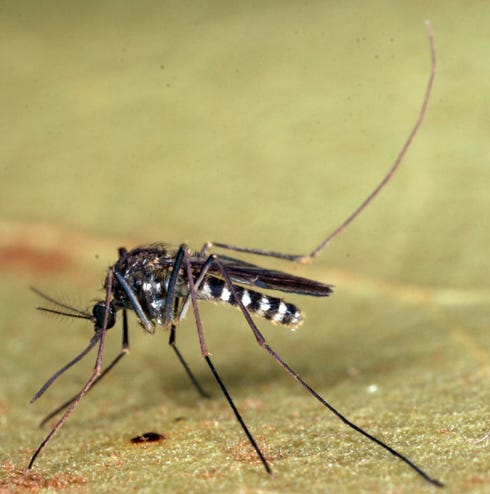
GAINESVILLE — A mosquito species that’s very abundant in the Southeast may play a more significant role in transmitting Eastern equine encephalitis than originally thought, according to a University of Florida scientist.
Nathan Burkett-Cadena, an assistant professor of entomology at the UF Institute of Food and Agricultural Sciences, helped investigate the role of the mosquito species known as Culex erraticus and Culista melanura, the latter of which is most commonly associated with spreading the potentially lethal virus.
“Our study shows us how a mosquito that is a relatively poor transmitter of the virus can actually have a huge impact on human health, due to its overwhelming abundance,” Burkett-Cadena said.
The study, published recently online in the Journal of Medical Entomology, was led by Thomas Unnasch, distinguished professor of global health at the University of South Florida.
Culex erraticus is more abundant than Culiseta melanura, the study shows. So it may be more important than scientists originally thought in transmitting EEE virus, at least in the Southeast. EEE virus, transmitted through the bite of an infected mosquito, can be passed to a wide range of animals including birds, reptiles and mammals. But once infected, horses and humans appear to suffer the most adverse effects.
The researchers combined data from field and laboratory studies in Florida with that collected earlier at Tuskegee National Forest in Alabama, where Culex erraticus is common and Culiseta melanura relatively rare. Their laboratory studies showed Culex erraticus was about half as effective as Culiseta melanura in transmitting the virus in the laboratory.
Even though it’s not as efficient in transmitting EEE virus in a lab, there are a lot more Culex erraticus mosquitoes in the Southeast than Culiseta melanura. Culex erraticus also feeds on a wider variety of animals than Culiseta melanura, which feeds almost exclusively on birds for its blood meals.
The disease caused by EEE virus is rare in humans — with approximately five to 10 cases reported yearly to the U.S. Centers for Disease Control and Prevention – but more than a third who contract the illness die and many who survive suffer severe brain damage. EEE virus poses a greater threat to horses (70 to 90 percent fatality rate), with Florida reporting 136 cases in 2014, the most of any state. No vaccine is approved for human use, and although a vaccine exists for horses many go unvaccinated.
Brad Buck is a University of Florida Institute of Food and Agricultural Sciences science writer.
This article originally appeared on Crestview News Bulletin: This mosquito may play a key role in transmitting a lethal virus
